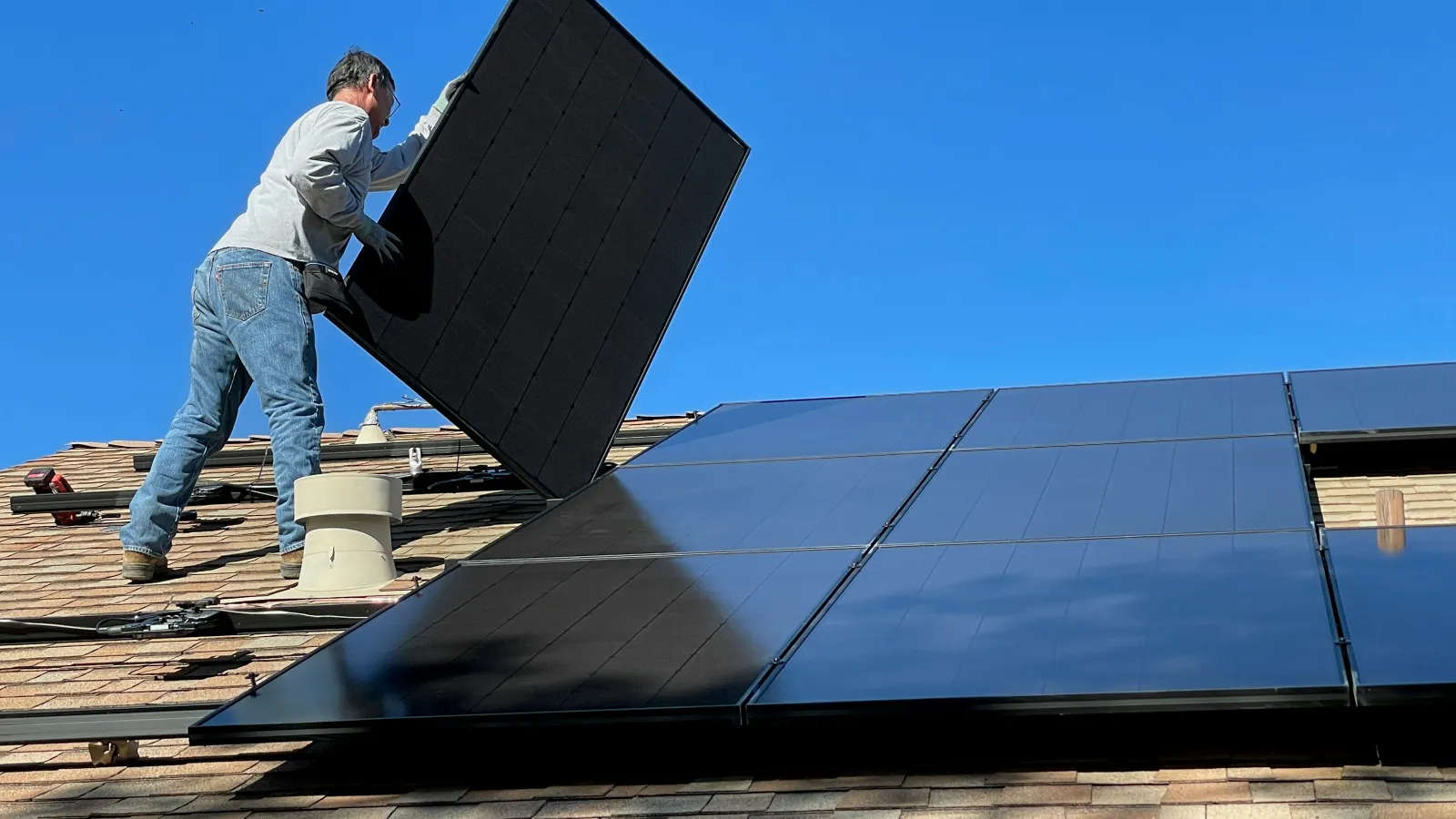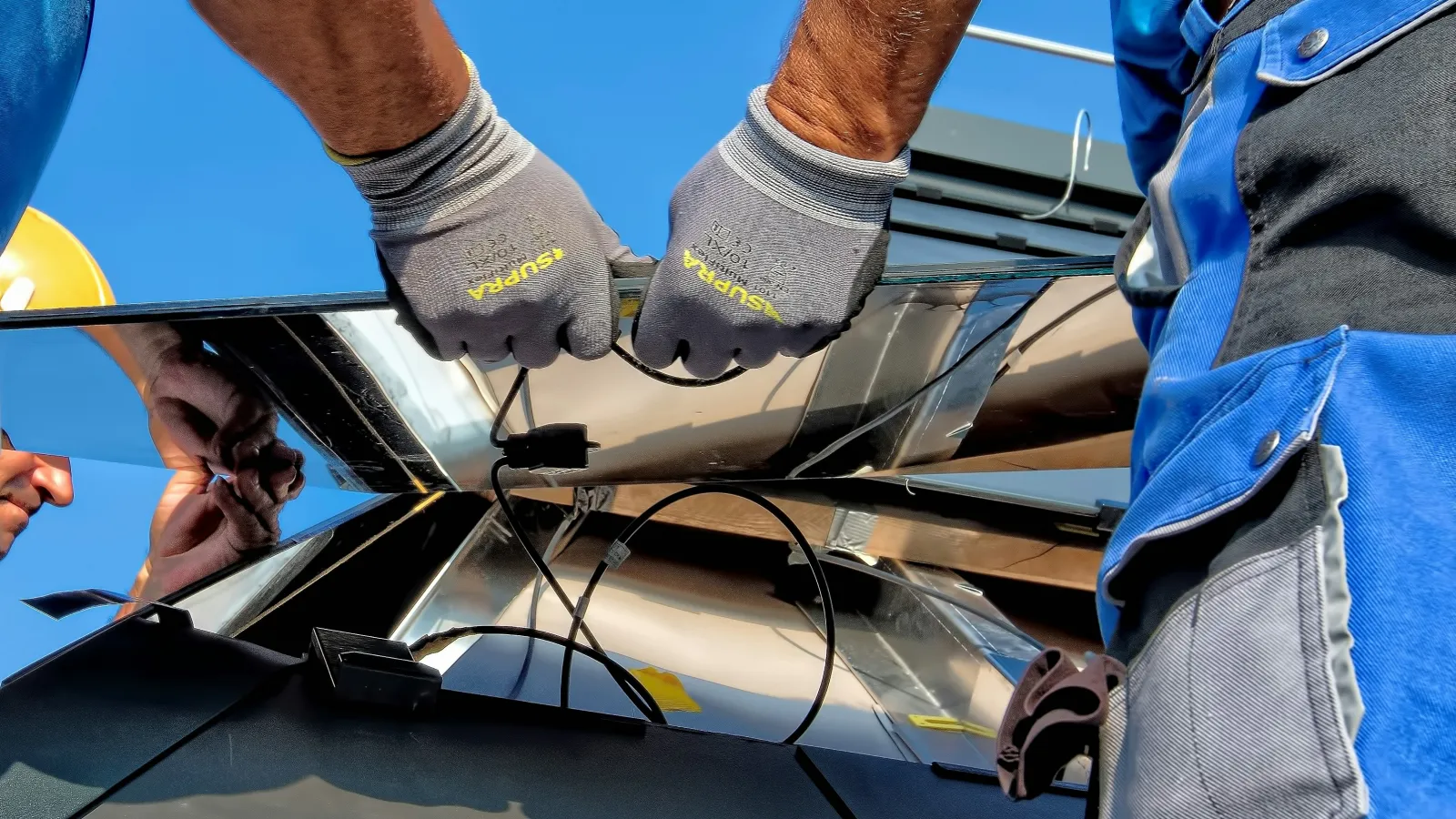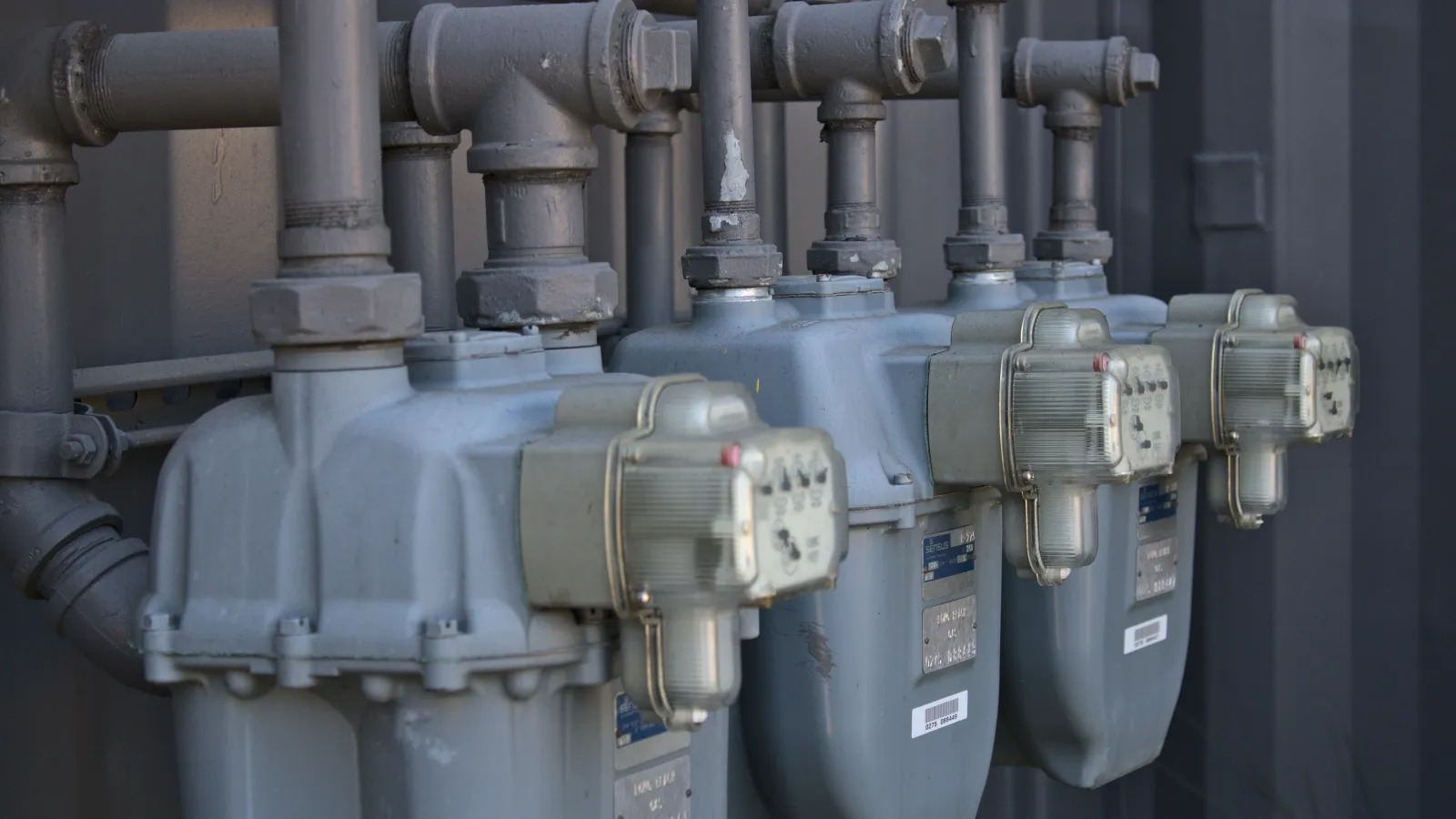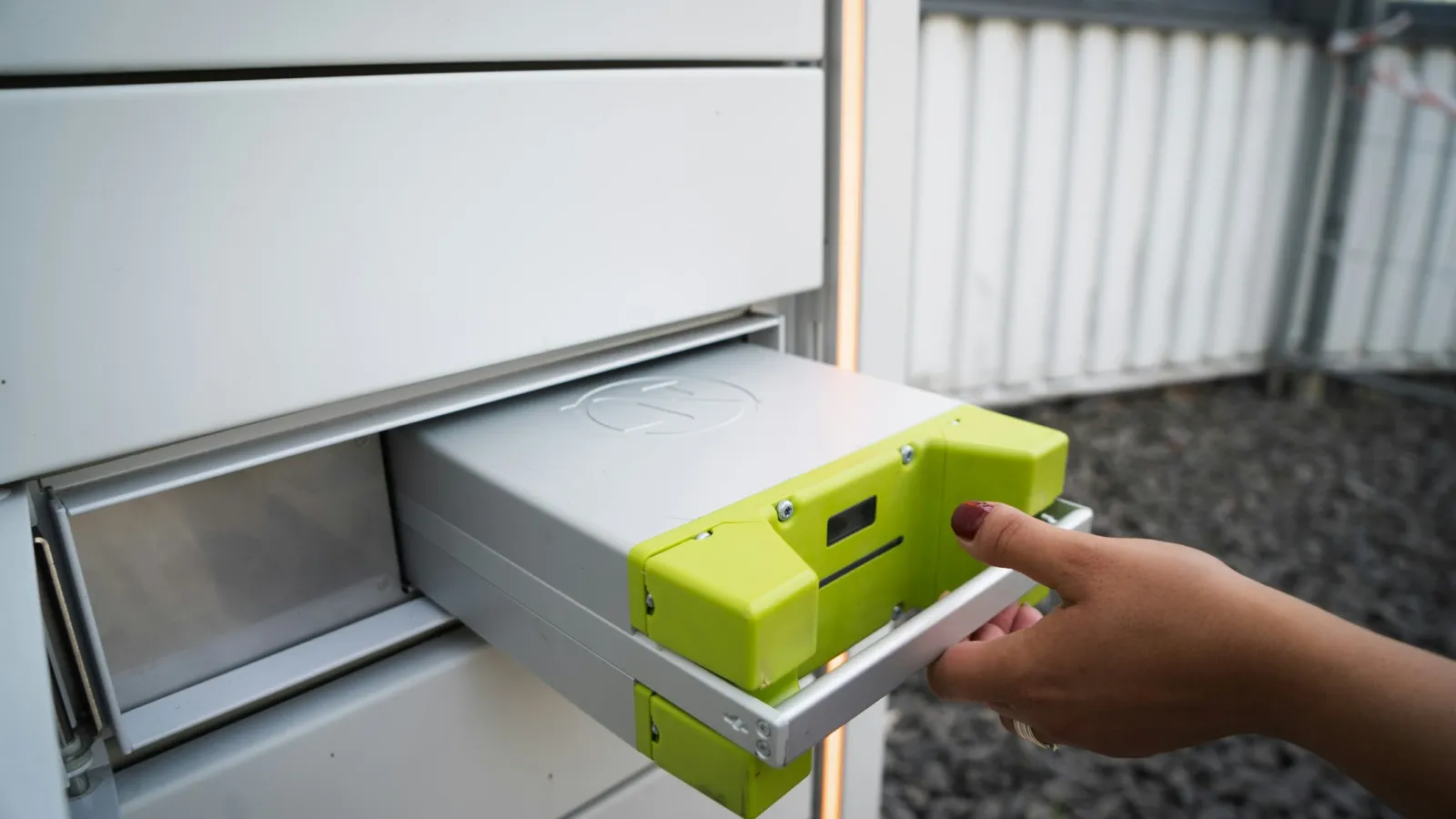Helping to Understand
Solar Energy






Solar Power
Let's Start with the Basics
In this complete guide, we cover the types of solar energy, how it works, benefits, net metering, and optional add-ons. We'll also address the most frequently asked questions along the way.
What is solar energy?
Solar energy is a form of renewable energy that comes from the sun. As the cleanest, most abundant form of energy, solar can help lower your carbon footprint and protect the environment. There are three main technologies that harness solar energy. They include:
- Photovoltaic cells (PV) absorb sunlight directly to create electricity. This electricity can then be distributed to appliances and machines in homes and businesses. The solar panels used today use photovoltaic technology. That's the technology we'll be focusing on in these guides.
- Solar heating and cooling (SHC) uses the heat from the sun to warm water or a general area.
- Concentrating solar power (CSP) uses solar heat to run electricity-gathering machines like turbines for power plants.
Solar energy is a great clean energy alternative to traditional forms of power. The solar panels used today use photovoltaic technology and that's the technology we'll be focusing on in this guide. Not only can solar panels help save you money on your electricity bill, but they can also help lower your carbon footprint, and protect the environment.
Solar Panels
Components, Cost and Quantity
What are the panels made of?
Solar Cells: These PV (Photovoltaic) cells are made of semiconductor materials, usually silicon. The cells are configured as a square or rectangle on the panel. These are the active components that convert sunlight into electricity. The silicon is infused with phosphorus or boron which increase or decrease the amount of electrons, giving each piece of silicon a negative or positive charge.
Encapsulation: Solar cells are encapsulated between layers of protective material, often made of tempered glass on the front and a durable polymer on the back, to shield them from the elements.
Frame: The frame provides structural support and protection for the solar panel.
Backsheet: This layer protects the backside of the solar cells and adds further insulation.
How do solar panels work?
Step 1: Absorption of Sunlight - Solar panels are exposed to sunlight, which consists of photons (light energy particles). The semiconductor material in the solar cells absorbs these photons.
Step 2: Generation of Electrons - The absorbed energy causes electrons in the semiconductor material to become energized and creates an electric potential.
Step 3: Electric Current Generation - The energized electrons create an electric current when they flow through the semiconductor material. This flow of electrons is what we know as electricity.
Step 4: An Inverter changes the electricity from DC to AC - The electricity generated by solar panels is in the form of direct current (DC). However, most homes and businesses use alternating current (AC). Therefore, an inverter is needed to convert DC electricity into AC electricity.
Step 5: Grid Connection - Generally, your system will still need to be connected to the local grid to pull power in times when it is not able to absorb enough sunlight to power your home. The converted AC electricity is either used on-site to power the home or business, with the excess sent to the electrical grid for distribution.
How much do solar panels cost?
The number of panels, size, design, and add-ons (like backup batteries) can all affect the cost for solar energy systems. While solar panels can save you money in the long run, there can be a substantial initial investment and other financial factors to consider (including permits, inspections, and installation costs).
Before you start planning your solar energy system, you should have an estimate of what your panels will cost you. Solar sales professionals will work with you to create a quote for a system that meets your needs. They can also share financing options.
How many panels does my home need?
The number of panels for a project is determined based on electrical usage for the property, orientation to the sun, roof angles and size, and other factors. On average, a home solar energy system will have around 20 to 25 panels.
Contact LivSmart.Solar and we'll connect you with a specialist who can survey your property and tell you exactly how many solar panels you need.
Inverters
DC to AC
What are they?
The main function of the solar inverter is to convert DC electricity into AC electricity so the electrical grid can use the energy. Micro-inverters may also be available and attach individually to panels instead of one or two for the entire system, which is standard.
DC electricity keeps a steady voltage and can only flow in one direction. It is frequently used in low voltage applications like charging batteries. AC electricity can flow both ways, and its voltage can fluctuate from positive to negative.
An inverter's main function is to convert solar energy into usable electricity for your home, and modern inverters can also maintain communication with computer networks. This communication allows for reporting usage and enhances maintenance capabilities.
How do they work?
Inverters are responsible for converting the direct current (DC) electricity generated by solar panels into alternating current (AC) electricity that can be used to power household appliances and be fed into the electrical grid.
Here's an explanation of how a solar inverter works:
Photovoltaic (PV) Cells: Solar panels consist of photovoltaic cells that convert sunlight into DC electricity. These cells generate DC voltage when exposed to sunlight.
DC Electricity Generation: As sunlight hits the PV cells, it activates electrons in the semiconductor material of the cells, creating a flow of DC electricity.
Solar Inverter Input: The generated DC electricity is fed into the solar inverter. The inverter is typically installed near the solar panels to minimize power losses.
DC to AC Conversion: The primary function of the solar inverter is to convert the DC electricity from the solar panels into AC electricity, which is the standard form of electricity used in homes and the power grid.
Inverter Control and Optimization: Some solar inverters includes control mechanisms and optimization features to ensure the efficient and safe operation of the system. These may include maximum power point tracking (MPPT) algorithms that adjust the operating point of the solar panels to maximize the power output.
Synchronization with Grid (if applicable): In grid-tied solar systems, the solar inverter synchronizes its output with the electrical grid. This is essential to ensure that the solar-generated electricity is in phase with the grid's AC electricity.
Anti-Islanding Protection: To prevent safety issues and damage to the grid, solar inverters are equipped with anti-islanding protection. This means that if there is a grid outage, the inverter will shut down to avoid sending electricity back into the grid, which could endanger utility workers trying to fix the issue.
AC Output: The solar inverter produces AC electricity, which can be used to power electrical devices and appliances within the home. If the solar system generates more electricity than the household consumes, the excess can be fed back into the grid (if the system is grid-tied) or a solar battery for backup usage.
Monitoring and Data Collection: Many modern solar inverters come with monitoring capabilities. They can provide real-time data on the system's performance, energy production, and potential issues. This data can be accessed remotely for system maintenance and performance analysis.
By converting DC electricity to AC electricity, a solar inverter ensures that solar energy can be effectively utilized for residential, commercial, or grid applications.
What is Net Metering?
Credit for excess energy
Solar net metering is a billing arrangement that allows some homeowners and businesses to receive credit for the excess electricity they generate. Any surplus electricity the panels generate gets fed back into the grid and credited to their account with the utility company. Solar net metering policies and rates are subject to local regulations and may not be available in some areas.
- Sunlight powers solar panels: The amounts generated vary depending on size, amount of sunlight, and their orientation to the sun. Solar panels are made of photovoltaic cells which converts sunlight to usable electrical energy.
- Inverter converts power from DC to AC: Homes and businesses use AC power thus making the inverter essential to the solar panel system. The inverter converts DC to AC power by changing the voltage and frequency to match the grid conditions.
- Using & Calculating: Solar energy is used to power your home just like traditional electricity and measured using a bidirectional meter. Bidirectional meters calculate electricity flow into the property when solar generation is insufficient, and back to the grid when the solar system produces excess electricity.
- Credit Accumulation & Utilization: When the solar panels generate more electricity than is immediately consumed on-site, the surplus is fed back into the grid. In this scenario, the bidirectional meter registers a credit for the excess electricity. During periods when the solar panels aren't producing enough electricity (e.g. at night or during cloudy days), the user draws electricity from the grid. The meter subtracts the credits earned during excess generation from the electricity consumed.
Solar Backup Batteries
Energy Storage and Backup
Solar batteries store excess electricity generated by solar panels beyond what's needed to power your home. Most homes are still connected to a utility company's power grid to pull power during cloudy days or at night. But on sunny days when the panels create more energy than your home needs, batteries can store the excess and be used as a backup during those low production times.
Batteries are optional, but particularly useful for those regions that do not allow solar net metering. Solar net metering is a process that some utility companies use to credit homeowners for their extra energy returned to the grid.
Q: How do solar batteries work?
Charging: During periods of sunlight, solar panels generate electricity. The surplus energy that is not immediately consumed is directed to the solar battery for storage.
Energy Storage: Solar batteries store the excess electricity in the form of chemical energy. This is typically done through electrochemical reactions within the battery. This energy stored as direct current (DC).
Discharging: When electricity demands exceed what the solar panels are currently producing (e.g., at night or on cloudy days), the stored energy in the battery is released, providing a continuous and reliable power supply to your home.
Inverter Conversion: The stored electricity is in direct current (DC) form. An inverter is used to convert DC electricity into alternating current (AC), which is the standard form of electricity used in homes and businesses.
Grid Interaction (if applicable): In some cases, solar batteries can be integrated with the electrical grid. They can draw power from the grid during times of low solar generation or send excess energy back to the grid when the battery is fully charged
Q: Why should I consider a solar battery?
Solar batteries provide energy independence by allowing you to store excess solar energy for use when your solar panels are not producing electricity. They help reduce reliance on the grid and can provide backup power during outages.
Q: What is the lifespan of a solar battery?
The lifespan of a solar battery varies but is typically in the range of 10 to 20 years, depending on the type of battery and usage patterns. Lithium-ion batteries, for example, tend to have a longer lifespan compared to lead-acid batteries.
Q: What types of batteries are used in solar energy systems?
The most common types of batteries used in solar energy systems are lithium-ion batteries and lead-acid batteries. Lithium-ion batteries are popular for their high energy density and longer lifespan, while lead-acid batteries are more cost-effective.
Q: How much backup power can a solar battery provide?
The backup power capacity depends on the size and capacity of the solar battery. Homeowner's can choose a battery size based on their specific backup power needs.
Q: Do I need a solar battery if I'm already connected to the grid?
While a solar battery is not mandatory for grid-connected solar systems, it can enhance energy independence, provide backup power during outages, and potentially offer economic benefits through time-of-use optimization and grid services.
Q: Can I go off-grid with a solar battery?
Yes, combining solar panels with a solar battery can allow for off-grid living. However, careful consideration of energy needs and system sizing is essential to ensure reliable power supply.
Q: How much maintenance do solar batteries require?
Generally, solar batteries require minimal maintenance. Regular monitoring and occasional checks may be needed to ensure proper functioning, and manufacturers provide guidelines for maintenance.
Solar batteries contribute significantly to the optimization of solar energy systems, offering both increased self-consumption of solar power and backup power capabilities, ultimately enhancing the overall reliability and sustainability of solar installations.
Getting Residential Solar
A Step by Step Guide
In the era of sustainable living, homeowners increasingly turn to solar power for a reduced carbon footprint and long-term clean energy benefits. The process of acquiring residential solar panels involves careful review, planning, and cooperation with various groups.
Below, we'll guide you through the typical journey a homeowner takes when purchasing residential solar, including key steps and the role of professionals in the industry.
Initial Consultation: Understanding Your Energy Needs
The journey starts with an initial meeting with solar sales professionals. Homeowners provide their electric bills, allowing analyzation of their energy usage patterns. This step helps design a system tailored to meet the unique energy needs of the household.
Typically, homeowners are introduced to their dedicated solar project manager after agreements are signed. Along with your salesperson, project managers become a crucial part of the journey, assisting not only with the initial assessment but also guiding homeowners through financing options and facilitating communication throughout the entire process.Sun Exposure and Shading Analysis: Maximizing Energy Production
Solar professionals assess the sun exposure and shading conditions around the home. This involves evaluating the orientation and tilt of the roof to maximize sunlight absorption, optimizing the panel layout for increased energy production.Roof Condition Assessment: Ensuring Structural Integrity
The next step involves a thorough examination of the roof's condition to ensure it can support the installation for the solar panels' lifespan. If needed, homeowners may choose to repair or replace their roof before installing solar panels.Customized System Design: Tailoring Solar Solutions
With data about energy usage, sun exposure, and roof condition, solar professionals design a customized solar system aligning with the homeowner's specific requirements. This involves selecting the right type and number of solar panels, inverters, and other components, like batteries, for optimal energy production.Collaboration with Utilities and Authorities: Navigating Permits and Approvals
Once the design is finalized, the solar sales staff work with local utilities, city inspectors, homeowners associations (HOAs), and other authorities having jurisdiction to obtain necessary permits and approvals, ensuring compliance with local regulations and building codes.Installation: Bringing the Vision to Life
With permits secured, the installation process begins. Professional installers place panels according to the customized plan, connecting them to the electrical system for seamless integration with the home's infrastructure.Inspection and Activation: Quality Assurance
Following installation, the solar system undergoes a comprehensive inspection to ensure it meets safety and performance standards. Local authorities may conduct final inspections to verify compliance with building codes. Once approved, the system is activated, and the homeowner can start harnessing the power of the sun.Monitoring and Maintenance: Long-Term Sustainability
Post-installation, many solar providers offer monitoring services to track the system's performance. Regular maintenance ensures the solar panels operate at peak efficiency, maximizing the return on investment over the system's lifespan.
Conclusion: A Bright Future with Residential Solar
The journey to residential solar is a detailed and cooperative process, involving the expertise of solar sales professionals, installers, local authorities, and utilities. From the initial meeting to system activation, each step is crucial, ensuring homeowners receive a customized solar solution meeting their energy needs while contributing to a sustainable and eco-friendly future. As more individuals embrace solar energy, they not only reduce reliance on traditional power sources but also actively contribute to a cleaner and greener planet.
